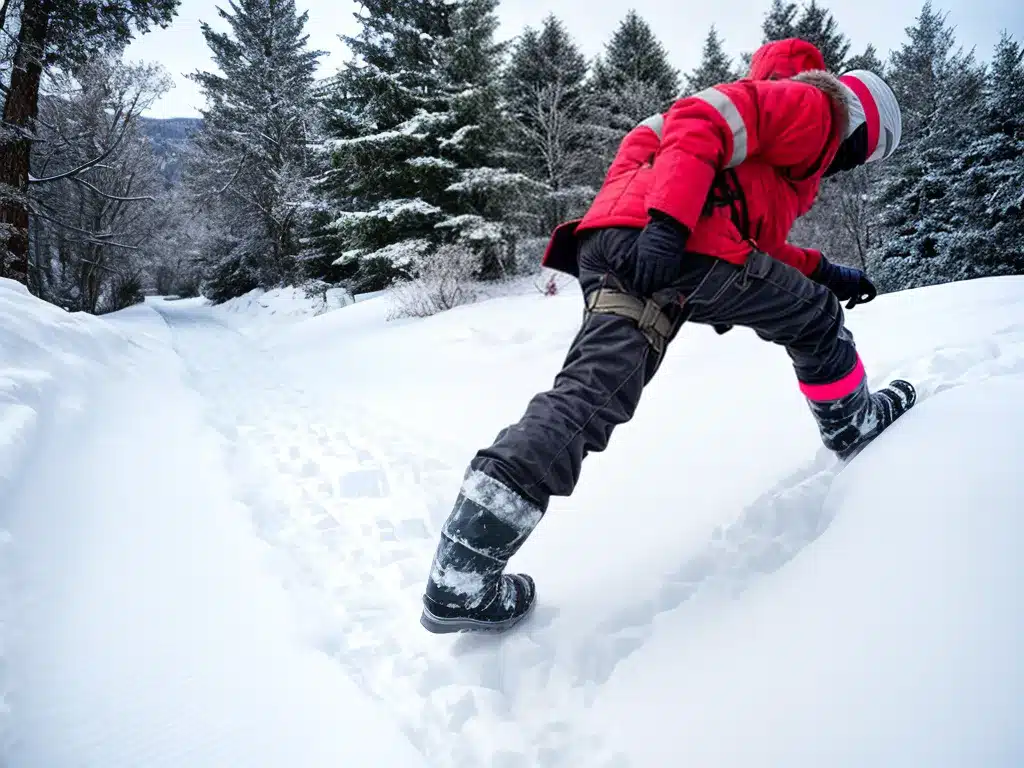Introduction
Winter brings beautiful snowy days, but also an increased risk of slips and falls. Icy sidewalks and snow-covered steps can be extremely hazardous. As the temperatures drop, it’s important to be vigilant about preventing winter falls to avoid injuries. In this article, I’ll discuss some key tips to help you steer clear of slips and stay safe this winter.
Be Aware of Hazards
The first step is to keep an eye out for icy patches and other slippery surfaces. Here are some key areas to watch out for:
- Sidewalks – Look for sections that appear glossy, wet, or refrozen after melting. These areas can be very slick.
- Steps – Porches, entrances, and stairs are prone to developing black ice. Inspect them thoroughly before using.
- Parking lots – Snow can obscure ice underneath. Go slow in parking lots as icy patches may lurk under the snow.
- Overpasses/Bridges – With cold air circulating above and below, overpasses tend to freeze first. Use extra caution here.
Being attentive and scanning for icy areas can go a long way in avoiding a dangerous slip. When in doubt, choose an alternative route.
Wear Proper Footwear
Having proper winter boots with good traction and ankle support is essential. The tread and sole material help grip snow and ice. Boots should be waterproof as well.
Avoid smooth-soled dress shoes and high heels – they offer no traction at all!
When wearing boots, lace them up tightly and double knot them for stability. Try to avoid boots with heels higher than 1 inch, as they decrease stability.
Take Slow, Small Steps
Walking slowly and carefully is key when surfaces are slick. Take small shuffling steps and keep your hands out of your pockets for balance.
- Plant your feet securely with each step.
- Bend slightly and walk flat-footed with your center of gravity over your feet as much as possible.
- Avoid long strides – small steps are safer.
Go slowly down slopes and stairs. Use handrails whenever available for stability. Rushing increases the chance of falling.
Use Ice Cleats or Traction Devices
For additional stability, consider attaching ice cleats or traction devices to your shoes. These grip the ice and snow better. Different options include:
- Stretch-on cleats – These elastic cleats slip over your regular shoes easily.
- Step-in/strap-on cleats – These devices feature spike grips and straps to secure them to your shoes.
- Clip-on cleats – These attach under your shoe with metal claws.
Traction devices are useful for especially icy conditions when boots alone don’t provide enough grip. They can give you extra security.
Keep Your Hands Free
Keep your hands out of your pockets when walking. Swing your arms naturally for better overall balance and stability.
You’ll also be ready to catch yourself if you do start to slip. Using trekking poles is another handy option to improve stability.
Avoid carrying large loads or cumbersome items. Keep your hands as free as possible for maximum balance. Use backpacks, trolleys or carts to transport items when needed.
Watch for “Black Ice”
One hazard to watch for is nearly invisible black ice. This is a thin, transparent sheet of ice that can look deceptively like a wet road or sidewalk.
Black ice often occurs during temperature drops when melted snow refreezes. Be suspicious of glossy-looking asphalt – it could be treacherous black ice!
When in doubt, tap your foot and check for slickness before stepping. Walking extremely cautiously in these situations can prevent a fall.
Get Help When Needed
If you regularly struggle with balance and mobility, don’t hesitate to ask others for assistance. Accepting a hand climbing stairs or having someone walk with you for support can be a wise precaution.
You can also use mobility aids like canes and walkers for added stability on winter walks. Getting help is smart – don’t let fear of falling keep you trapped indoors.
Treat Sprains and Breaks Properly
If you do take a tumble, treat any resulting injuries appropriately:
- Follow RICE for sprains: Rest, Ice, Compression, Elevation.
- Seek medical care promptly for breaks/fractures.
- Wear prescribed casts/boots and use crutches as directed after injuries.
Letting sprains and breaks heal fully helps prevent future complications down the road. Don’t rush your recovery.
Conclusion
While winter weather can make for hazardous walking conditions, some smart precautions can lower your risk significantly. Paying attention, wearing proper footwear, using traction devices, and being careful where you step can all keep you steady on your feet. Stay alert to winter hazards like black ice. Ask for assistance if you need it. With vigilance about slippery conditions and caution in your movements, you can continue safely enjoying the winter season. Have a healthy, happy winter!







